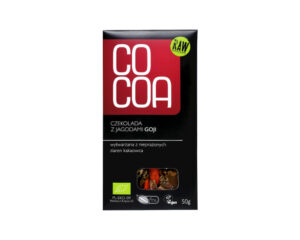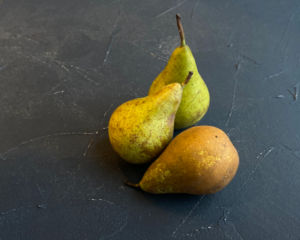Organic Ceremonial Cocoa Powder RAW
From 9.10€
Cocoa comes from Central America. The Mayans, Aztecs and other peoples consumed cocoa drinks similar to the teas or pozole drinks still produced in Mexico and Central America. These ancient civilisations not only consumed cocoa as a beverage, but also considered it sacred, using it in rituals and ceremonies. Cocoa beans were so highly valued that they were used as currency and were central to cultural and spiritual practices. Today, the tradition of ceremonial cocoa is being rediscovered as people around the world see its potential for emotional healing and spiritual connection.
Features: Cocoa beans contain compounds such as phenylethylamine (PEA), often referred to as the ‘love molecule’, as it can stimulate the release of endorphins and dopamine in the brain, producing feelings of happiness, pleasure and even mild euphoria. This can contribute to a better mood and well-being. PEA has a mild stimulant effect that can increase alertness, help improve concentration, making it useful for tasks requiring mental clarity. Due to its role in promoting a sense of pleasure, PEA has been associated with aphrodisiacs that enhance romantic and sensual experiences. Cocoa is an excellent source of iron, magnesium, phosphorus, calcium, zinc, copper, manganese and selenium. High potassium levels help maintain proper blood pressure and muscle tone.
Attention!
Cocoa naturally contains caffeine and theobromine.
Although the amounts are lower than in coffee, people sensitive to caffeine may experience anxiety, nervousness or insomnia.
Excessive consumption of cocoa can cause digestive problems, including nausea or diarrhoea and headaches,
Cocoa can cause negative side effects when taken with certain medications, especially antidepressants, so be careful.
Usage:
30 g of cocoa per day is more than enough.
It is very important to start with a small amount and gradually increase until the optimal dose is found, as individual reactions can vary widely.
Cocoa is generally safe to consume during pregnancy, but large portions are not recommended.
It is important to monitor the amount of cocoa consumed.
Hot chocolate: Dissolve the cocoa powder in a hot container and, after pouring warm (not boiling) water over it, tap it out. Flavour with coconut milk powder or a suitable herbal drink – oats, almonds, coconut. Sweeten with your favourite sweetener and try spices – vanilla, cinnamon, cardamom, cayenne pepper. Make chocolate at home Melt the cocoa powder in a hot pot with coconut milk powder or, for example, nut butter (not water or herbal drink) and pour into the moulds. After chilling in the fridge, you can enjoy high-quality chocolate. Sprinkle on top of breakfast porridge, smoothies or salads.
Sources
https://cacaolaboratory.com,
https://www.sciencedirect.com,
https://www.thechocolatejournalist.com
NB! The information provided here should not be interpreted as a recommendation for treatment or other types of health problems. We recommend that you make personal health decisions after evaluating different sources of information.
100% Organic Ceremonial Cocoa
Criollo (70%) and Trinitario, Forastero (30%)
Energy value 2416 kJ / 586 kcal
Fats 56 g
- of which saturated fatty acids 34 g
Carbohydrates 30 g
- of which sugar 1,5 g
Fibre 23 g
Protein 13 g
Salt 0,2 g
Store in a dry, cool place, tightly closed and out of direct sunlight.











